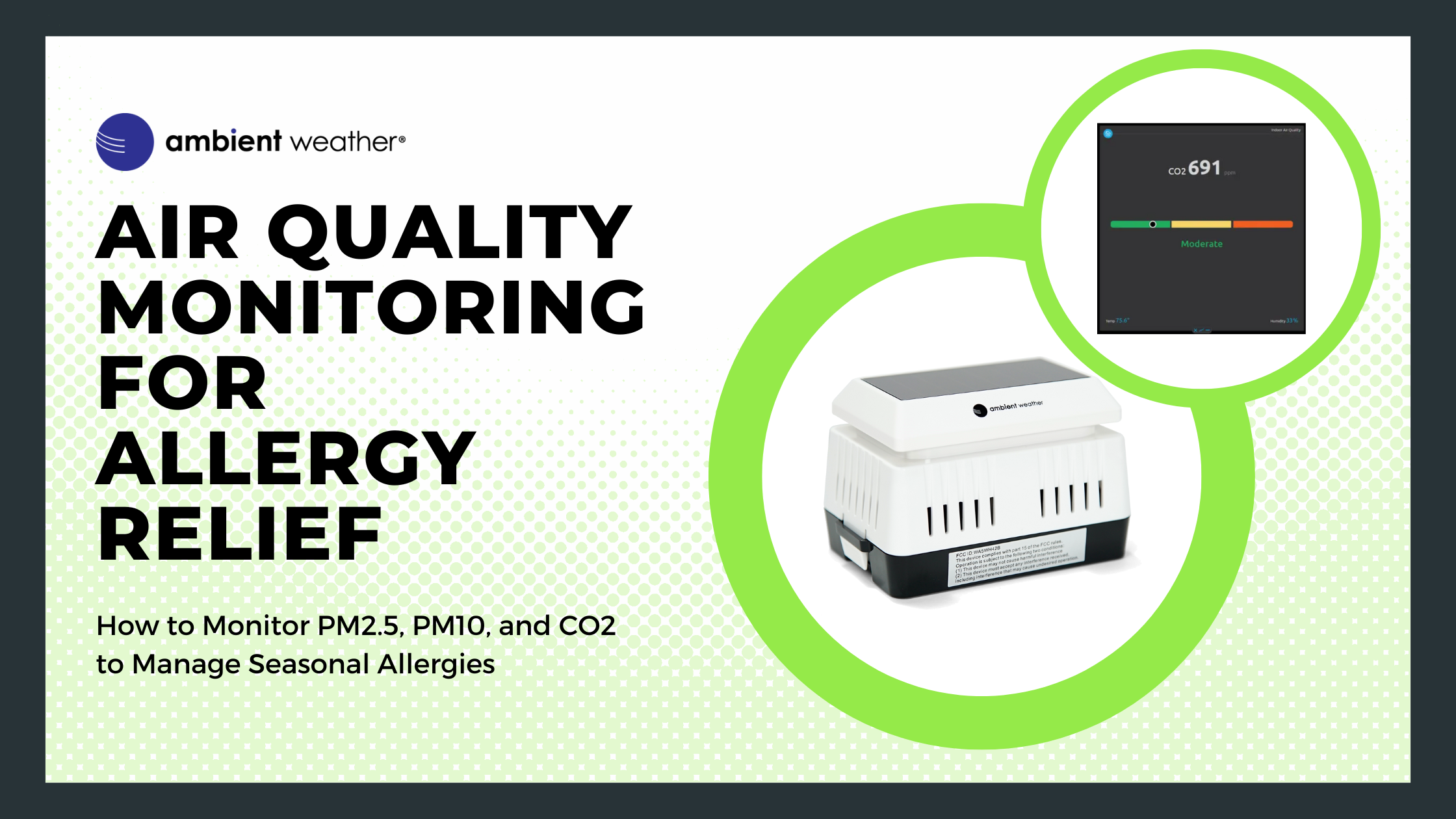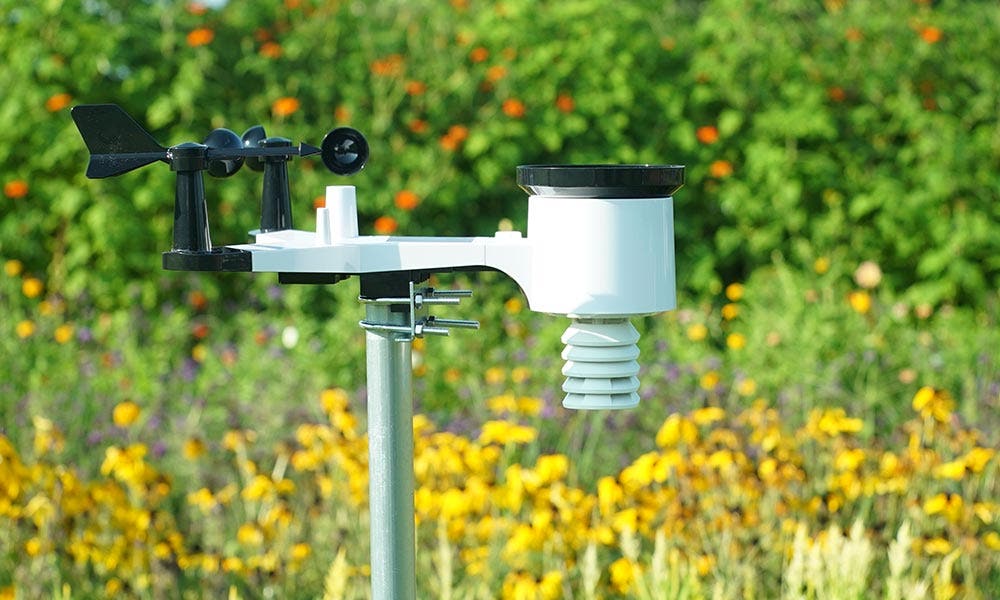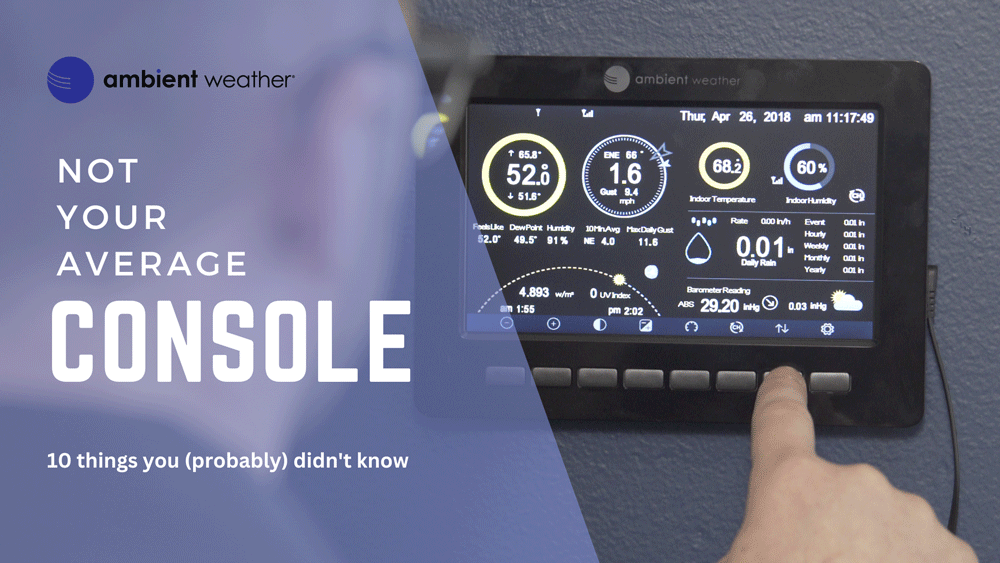Ambient Weather PM25 Wireless Outdoor Particulate Monitor
Note; The PM25 Monitor works with Ambient Weather Models WS-1965, WS-2000, WS-2902C, WS-4000, WS-5000, and the OBSERVERIP Module (WS-0800-IP, WS-0900-IP, WS-1200-IP, WS-1400-IP, WS-1550-IP, WS-1600-IP, WS-5000-IP).
BEFORE YOU ORDER, make sure you upgrade the firmware first:
- WS-2000/WS-5000: How to Update the Firmware
- ObserverIP Module: How to Update the Firmware
- WS-2902B/WS-2902C: How to Update the Firmware
Important Notes and Limitations:
- Place the sensor in a shaded, well-ventilated, non-moisture condensing area. Although the sensor is designed for outdoor use, it is best to mount it in a well-protected area, such as under a patio or carport.
- The PM25 Wireless Outdoor Particulate Monitor has a water resistance rating of IPX3 (can take water sprays of up to a 60° angle).
- The solar panel is sensitive to low light but will still require monthly charging from the USB power port.
- With PM2.5 sensors, fog reflects the light and can result in a higher reading. This is characteristic of the inherent sensor design. The condition occurs during rainy or foggy weather, where:
Outdoor Temperature – Dew point Temperature ≤ 2ş C (3.6 şF).
Thus, when the air is nearly saturated, the data is invalid.
Place the Ambient PM25 outdoor sensor anywhere in and around your home to monitor PM2.5 concentration levels. Although the sensor is designed to be outdoors, it is best to mount it in a well-protected area, such as under a patio or carport. Sends data to AmbientWeather.net, where you can monitor and analyze the air quality. Send alerts. Works with Google Home and Amazon Alexa.
Includes a solar collector and rechargeable batteries. A USB port allows you to charge the batteries where there is no sunlight.
The sensor is a high-quality Sensirion Particle Sensor.
PM2.5 refers to particles that are 2.5 microns or smaller in diameter. The high-quality Sensirion Particle Sensor uses laser scattering to radiate suspending particles in the air, then collects scattering light to obtain the curve of scattering light change with time. The microprocessor calculates the equivalent particle diameter and the number of particles with different diameters per unit volume.
The following describes the Air Quality Index (AQI) vs. PM2.5 breakpoints.
AQI Category: Breakpoints
- Good: 0.0 – 12.0 (µg/m3
- Moderate: 12.1 – 35.4 (µg/m3)
- Unhealthy for Sensitive Groups: 35.5 – 55.4 (µg/m3)
- Unhealthy: 55.5 – 150.4 (µg/m3)
- Very Unhealthy: 150.5 – 250.4 (µg/m3)
- Hazardous: 250.5 – 350.4 (µg/m3)
- Extremely Hazardous: 350.5 – 500 (µg/m3)
Sensor Dimensions: 2.8 x 4.0 x 2.7 in
Printed on the part as WH42 or WH42B.























